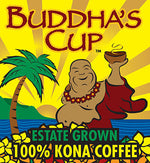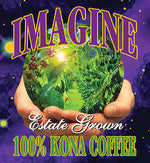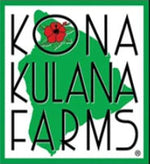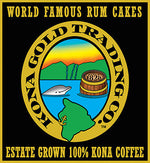When the sun is blazing, there’s nothing quite like a refreshing cup of iced coffee to cool down and perk up. Chances are you're curious to learn how to make iced coffee at home.
From choosing the right coffee beans to adding exciting flavors, we’ll guide you through the ins and outs of creating that perfect cup.
Looking for exceptional coffee? Check out our selection at Buddha’s Cup.
How to Choose the Right Coffee Beans?

How do you choose the right coffee beans to use for iced coffee?
It’s simple, but there are a few elements to it.
You should start by understanding that there are a variety of coffee beans which can impact the flavor and smell of your coffee. Have an idea of what type of brew you’re going for.
Next up is considering your brewing method. Not every type of coffee bean is suitable for certain types of brewing methods. Make sure that you buy coffee beans that suit the type of brewing method available to you.
Finally, evaluate the coffee bean quality. You can check the roast date before buying for an easy way to discern this.
Understanding Coffee Bean Varieties
Coffee comes in many flavors, aromas, and characteristics, largely influenced by its species.
The two main species that dominate the coffee world are Arabica and Robusta.
Arabica beans have a wider taste range, between sweeter, more tangy flavors, and a higher concentration of sugar compared to Robusta beans.
On the other hand, Robusta beans have a stronger, harsher taste, with a nutty aftertaste.
Arabica beans are grown at higher altitudes, resulting in a denser bean, which contributes to its flavors. They are found in regions with ample rainfall and lots of shade.
Robusta beans are grown at lower altitudes and have more caffeine content, which, while making the plant more immune to diseases, also contributes to its bitter taste.
Selecting Coffee Beans for Your Brewing Method
Not all brewing methods are created equal, and the same goes for coffee beans.
Espresso requires a fine grind and works best with a dark roast, while a French press will need a coarser grind and can work well with medium to dark roasts.
When it comes to making iced coffee, or more specifically, how to make good iced coffee, it's vital to choose a brewing method that suits your taste preference.
Whether you're opting for the bold flavor of an espresso-based iced coffee or the subtle taste of a cold brew, the type of coffee bean, its grind size, and roast level will shape the final flavor.
Evaluating Coffee Bean Quality
Quality is key when it comes to coffee beans. The best way to ensure you’re getting fresh beans is to check the roast date before buying.
Ideally, you should use coffee beans within two weeks to a month of their roast date.
Take a look at the packaging as well. Information on the origin, processing methods, and flavor notes will be there, giving you insights into the characteristics of the coffee inside.
When it comes to buying whole or pre-ground, always go for whole beans. They retain their freshness longer, allowing you to grind them just before brewing, ensuring a more flavorful cup.
Learning Various Coffee Brewing Methods

Cold brew is a popular choice for iced coffee lovers.
It’s made by steeping coarse coffee grounds in cold water for an extended period (usually 12 to 24 hours), resulting in a sweet and less acidic brew.
Hot brewing is a quicker method where you brew your coffee hot before cooling it down with ice. While this method is faster, it can result in a more bitter taste due to the rapid cooling process.
Flash-chilling is another method to consider, where freshly brewed hot coffee is poured directly over ice. This helps preserve the coffee’s original flavors and aromas, giving a refreshing taste.
Step-by-Step Guide to Making Cold Brew Iced Coffee

Making cold brew iced coffee is simpler than you think. However, if it’s your first time or you’re just not very confident, having a step-by-step guide can be really handy.
Here’s ours:
1. Gathering Your Supplies
Firstly, you’ll need coarsely ground coffee beans, cold water, a large jar or pitcher, and a fine-mesh strainer or coffee filter. If you’re feeling fancy, opt for a cold-brew coffee maker.
2. Choosing the Right Coffee Beans
Choose high-quality, fresh coffee beans. Arabica beans with a medium to dark roast profile usually work best, giving a smooth flavor that stands up well to the cold brewing process.
3. Measuring and Grinding the Coffee
A standard ratio is about one cup of coarsely ground coffee to four cups of cold water, but feel free to adjust to your liking. The coarser the grounds, the better, as it makes the filtering process easier and prevents over-extraction.
4. Mixing and Brewing
Combine the coffee grounds and cold water in your jar or pitcher, giving it a good stir to ensure all the grounds are fully saturated.
Cover and let it steep for at least 12 to 24 hours. The longer it steeps, the stronger and more concentrated your cold brew will be.
5. Filtering and Diluting
Once your brew has steeped, strain the coffee grounds from the liquid. You might need to do this a couple of times to get rid of all the tiny coffee particles.
After straining, you’re left with a coffee concentrate that you can dilute with water, milk, or a milk alternative to your liking.
Looking to stock up on quality coffee beans for your next iced coffee? Check out Buddha’s Cup collection of premium coffee beans.
Creative Ways to Flavor Your Iced Coffee

When it comes to how to make iced coffee that’s uniquely yours, the sky’s the limit. From syrups and spices to extracts, there are countless ways to add flavor to your brew.
If you’re looking to satisfy your sweet tooth, why not try homemade vanilla or caramel syrup for a sweet twist?
For those feeling bold, a pinch of cinnamon or a splash of coconut extract will add an exotic flair to your iced coffee.
At our Coffee Club, you get to enjoy the best Kona coffee with free shipping, discounted pricing, and monthly coffee club member-only giveaways.
Adding Sweeteners and Creamers
Whether you prefer your iced coffee black, sweetened, or somewhere in between, there’s no shortage of options when customizing your drink.
Sugar, honey, and agave nectar are all popular sweetener choices, while milk, cream, and dairy alternatives like almond or soy milk can add a creamy texture to your coffee.
The key is balance. It’s all about finding the right combination that suits your taste buds.
Top 3 Iced Coffee Presentation Tips

For a coffee enthusiast, it’s not just about how the brew tastes and smells, but also how it looks. Coffee presentation can be a huge part of the experience, so you shouldn’t neglect it!
Pay attention to your serving vessel, whether or not you’re using ice cubes or other cooling methods, and whether you will add any garnishes or decorative touches to the brew.
After paying attention to these elements, your iced coffee will have A-Grade presentation!
1. Glassware and Serving Vessels
The right glass will make all the difference in presenting your iced coffee. Opt for a tall, slender glass to show the drink’s color and consistency, and consider pre-chilling the glass in the freezer for frostiness.
2. Ice Cubes and Cooling Methods
Ice plays a crucial role in iced coffee, not just in cooling the drink, but also in adding to its visual appeal. Try using large ice cubes or even coffee ice cubes (made by freezing brewed coffee) to keep your drink cool without diluting its flavor.
3. Garnishes and Decorative Touches
A sprig of mint, a dusting of cocoa powder, or a simple straw will add the finishing touch to your iced coffee.
Get creative and think about what compliments your drink’s flavor profile while also enhancing its visual look.
At Buddha’s Cup, we’re more than coffee growers. Check out our teas, honey, merchandise, and more.
Iced Coffee vs. Other Cold Coffee Drinks

Iced coffee isn’t the only player in the cold coffee game. There are many other delicious options to explore; iced latte, frappuccino, and nitro cold brew to name a few.
Here’s the major differences between iced coffee and the other types of coffee-based beverages.
Iced Coffee vs. Iced Latte
While iced coffee is made by cooling down regular brewed coffee, an iced latte involves a shot of espresso mixed with chilled milk and served over ice.
The result? A creamier, smoother drink, with the espresso giving a concentrated coffee flavor.
Consider joining us for a tour around our Kona coffee farm!
Iced Coffee vs. Frappuccino
Frappuccinos, popularized by coffeehouse chains, are blended iced drinks that often include coffee, milk, ice, and flavored syrups, topped with whipped cream. They’re sweeter and more dessert-like compared to traditional iced coffee.
Iced Coffee vs. Nitro Cold Brew
Nitro cold brew takes cold brew to the next level by infusing it with nitrogen gas. This creates a creamy texture with froth, making for a unique and luxurious coffee experience.
Enjoying Homemade Iced Coffee

Remember, making iced coffee at home is all about experimentation and finding what works best for your taste buds. Don’t be afraid to try new flavors, adjust the sweetness, or experiment with different brewing methods until you find your perfect cup.
And when you’re ready to stock up on premium coffee beans for your next iced coffee, Buddha’s Cup is just a click away. We're passionate about delivering exceptional coffee experiences.
If you have any questions or want to learn more about our coffee, don't hesitate to contact us.
FAQs
Can I make iced coffee with regular coffee?
Yes, you can make iced coffee using regular brewed coffee, and it’s a straightforward process. The key is to brew your coffee stronger than you usually would because when you pour it over ice, the melting ice will dilute the coffee, making it taste watered down. Once you’ve brewed your coffee, let it cool to room temperature, then place it in the refrigerator to cool down even further. When you’re ready to serve, simply pour the chilled coffee over a glass filled with ice.
What’s the best coffee-to-water ratio for cold brew?
The generally accepted standard is a ratio of 1 cup of coarsely ground coffee to 4 cups of cold water. However, this varies depending on personal preference. It might be best to stick to the standard ratio and then adjust according to your taste in subsequent batches. If the brew is too strong, you can always dilute it with more water or milk when serving.
How long does cold brew last in the fridge?
When stored properly in the refrigerator, cold brew concentrate can last up to two weeks, but it’s recommended to consume it within the first week for the best taste. To maintain its freshness and prevent any off-flavors from developing, keep the cold brew in an airtight container.













